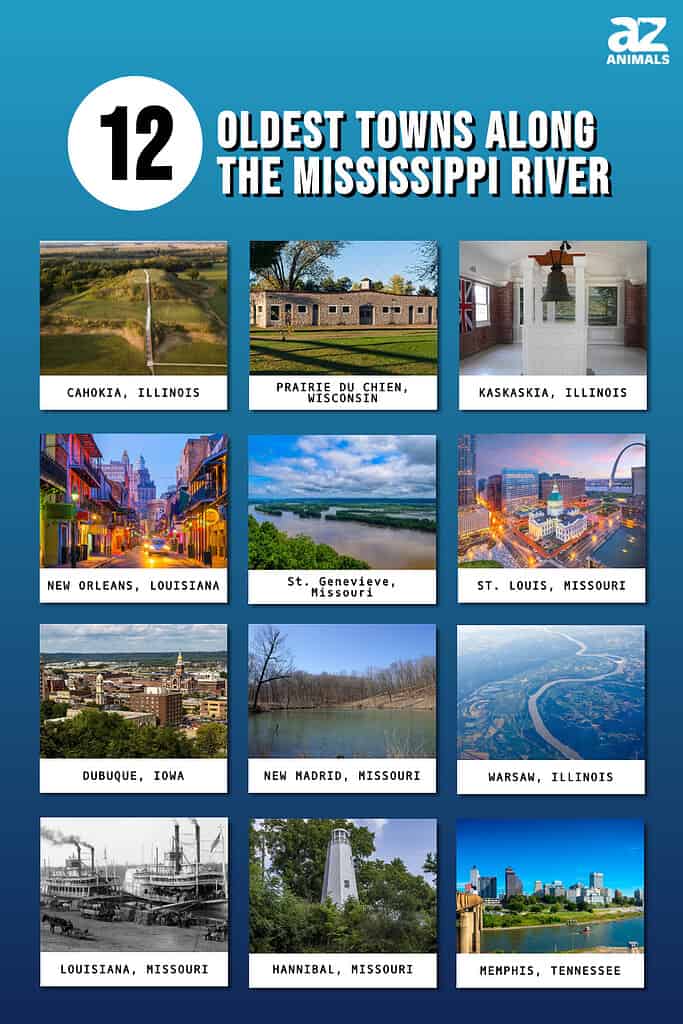
The mighty Mississippi River weaves through the country. Accordingly, the currents of time have carved out the landscapes of America’s heartland. But have you ever wondered about the stories hidden within the river’s twists and turns?
Here, we set sail on a journey through history, unearthing the 12 oldest towns along this iconic waterway. Each of these towns has its own unique charm and heritage. They offer a glimpse into the lives of those who shaped the United States.
So grab your explorer’s hat and join us as we voyage into the past! We’ll discover the rich tapestry of cultures and traditions that make these riverside towns true gems. Let the adventure begin!
1. Cahokia, Illinois (Founded in 1699)

The largest earthen mound in North America, aerial view of Monk’s Mound at Cahokia, IL.
©Matt Gush/Shutterstock.com
Let’s go back in time to Cahokia, founded in 1699. Once an influential ancient city, it’s nestled in the southern part of Illinois. In its heyday, around 1050 to 1200 AD, Cahokia outshone most cities in size. We’re talking about a population of up to 20,000 people! The hub of the Mississippian culture, it was a buzzing metropolis with massive earthen mounds.
By 1350, Cahokia had largely been abandoned. To this day it is still unknown as to why this happened and is considered one of the greatest mysteries of North American archaeology. Climate change, political upheaval, or perhaps societal collapse may have been to blame.
Impact of European Contact and Settlement
Fast forward to the late 17th century, when French missionaries came upon the site. They named it “Cahokia” after the tribe living in the region. Interestingly, these Cahokians had no historical connection to the original city builders.
The Europeans didn’t simply act as passive observers. They brought about significant changes. Their introduction of new goods and materials, such as metal and glass beads, altered the local way of life.
Today’s Attractions and Historical Sites
So, what’s left of Cahokia today?
Towering at 100 feet, Monk’s Mound dominates the site. It’s the largest prehistoric earthen structure in the Americas. Visitors can climb to the top for an amazing view of the St. Louis skyline. You’ll find 70 mounds preserved in this UNESCO World Heritage Site. The museum, chock-full of artifacts, offers insights into the lives of the ancient Cahokians.
A fascinating sight is Cahokia’s Woodhenge. This circle of wooden posts functioned as a calendar, marking solstices and equinoxes.
2. Prairie du Chien, Wisconsin (1673)
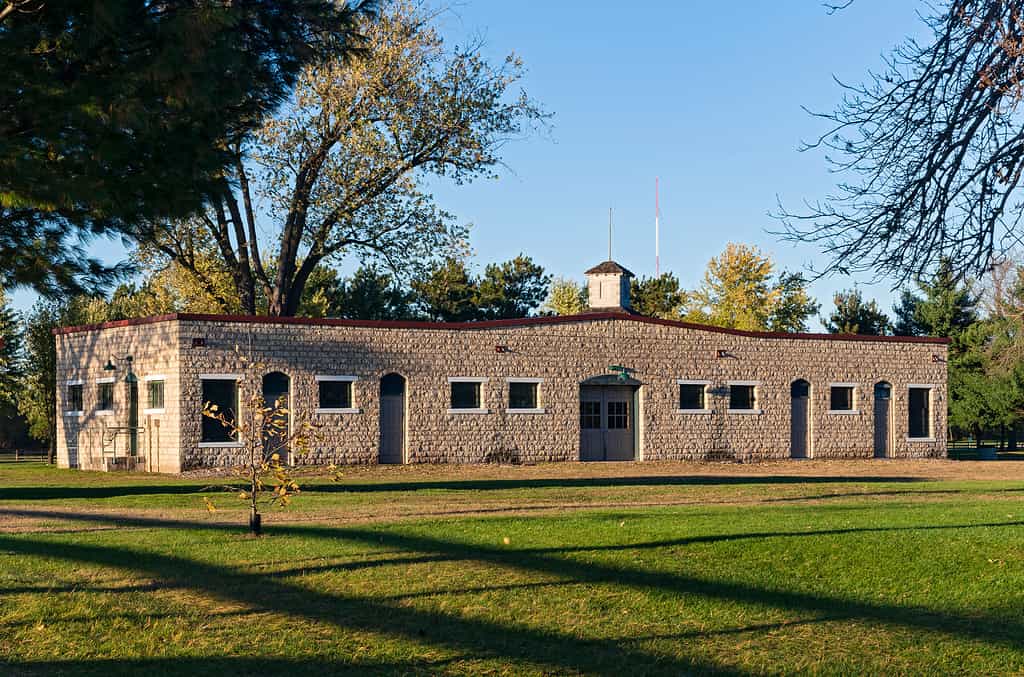
Boasting a rich history entwined with the fur trade, Prairie du Chien is a treasure trove of fascinating stories.
© Joe Ferrer/Shutterstock.com
Welcome to Prairie du Chien! As we travel back to 1673, we find ourselves in a bustling trading post nestled along the banks of the Mississippi River. Because Prairie du Chen boasts a rich history entwined with the fur trade, it is a treasure trove of fascinating stories.
Importance as a Trading Post
As a strategic trading post, this town was a melting pot of cultures. Due to this, it fostered relationships that would shape the region for years to come. Traders and Native Americans exchanged goods amidst the verdant landscape of Prairie du Chien.
Historical Significance in the Fur Trade
Did you know that Prairie du Chien was a crucial player in the fur trade? With trappers and traders flocking to the area, the town became a bustling hub of commerce. In fact, it enticed even the likes of John Jacob Astor, a legendary fur magnate. As you wander through Prairie du Chien, take a moment to appreciate the industrious spirit that once echoed through its streets.
3. Kaskaskia, Illinois (1703)
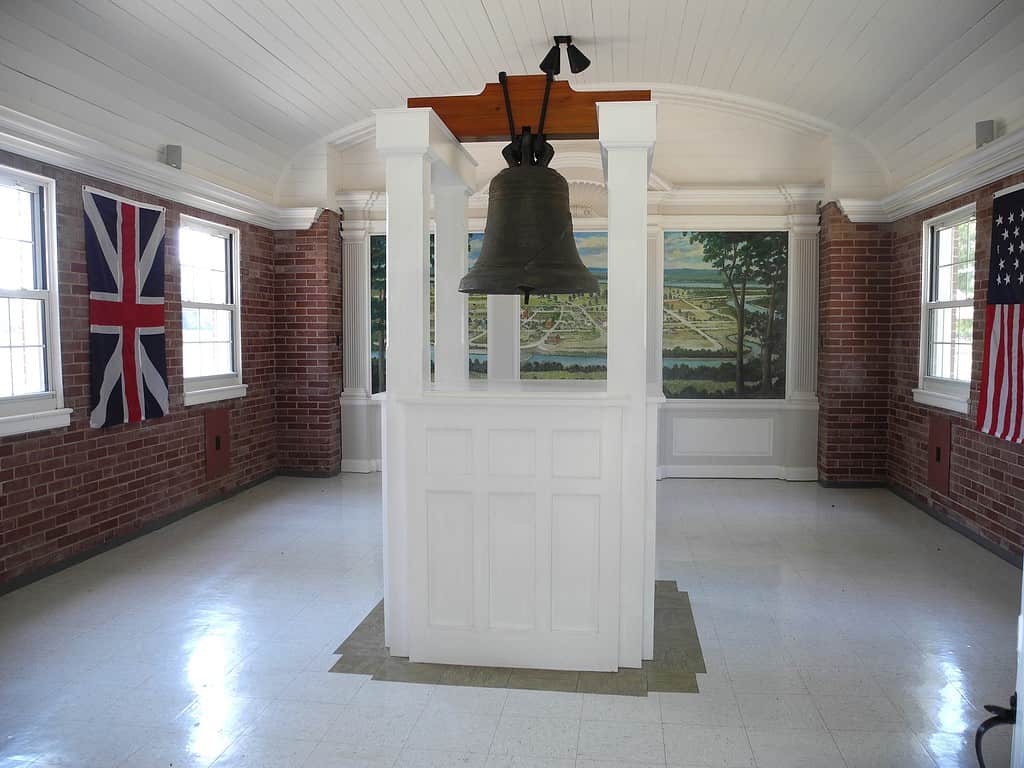
This bell, known as The Liberty Bell of the West, was rung in Kaskaskia to celebrate its liberation on July 4, 1778, from the British by American Colonel George Rogers Clark.
Next stop, Kaskaskia! Back in 1703, French settlers laid the foundations of this quaint little town. With a rich history, Kaskaskia has quite a story to tell.
Early French Settlement and History
Imagine the sound of footsteps echoing through the wilderness as French explorers and missionaries ventured into uncharted territory. Kaskaskia, once a thriving French village, now whispers the tales of its early settlers. From the establishment of a Jesuit mission to its role as a regional hub of trade, Kaskaskia has been shaped by the dreams and determination of those who called it home.
Role in the American Revolution
Kaskaskia played a pivotal role in the American Revolution. Soon after George Rogers Clark and his band of patriots seized the town from the British in 1778, the locals cheered in support of their newfound freedom. This victorious moment marked a significant milestone in the fight for American independence. A bell known as “The Liberty Bell of the West” was rung in Kaskaskia to celebrate its liberation on July 4, 1778, from the British by American Colonel George Rogers Clark. It was cast in 1741 by Louis XV of France as a gift to the Catholic Church in Illinois.
4. New Orleans, Louisiana (Founded in 1718)
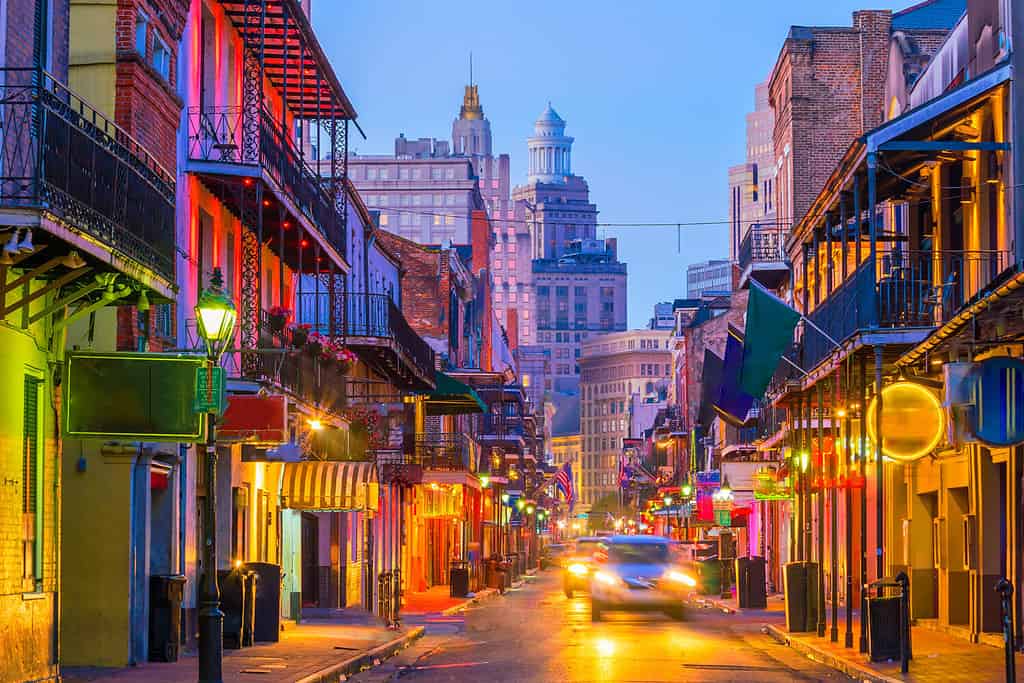
Pubs and bars with neon lights in the French Quarter, New Orleans, LA.
©f11photo/Shutterstock.com
Picture yourself traveling back to 1718 when New Orleans came into being, thanks to the efforts of Jean-Baptiste Le Moyne de Bienville, a French colonial administrator. Bienville selected the site for its defensive benefits—the location was entirely surrounded by water.
Under French rule, New Orleans established itself as a crucial colonial city. The city’s strategic location near the Gulf of Mexico made it a key trading center. Spain briefly ruled New Orleans between 1763 and 1802. This period saw the city grow and strengthen its defenses.
Role in the United States Development
The early 19th century signaled an era of transformation for New Orleans. The Louisiana Purchase in 1803 marked the city’s transition to American control. This event doubled the size of the United States. New Orleans flourished as a bustling port city, capitalizing on its prime location along the Mississippi River. It became a center for the cotton and sugar industries.
New Orleans Today: A Cultural Melting Pot
New Orleans today is a fusion of cultures with influences from Europe, Africa, and the Caribbean. Creole and Cajun cultures heavily influence New Orleans. These cultures are evident in the city’s food, music, and festivals. Many people recognize New Orleans as the place where jazz was born. The city’s vibrant music scene is a must-experience. Plus, who can forget the city’s iconic Mardi Gras celebrations?
Wandering through the French Quarter gives a glimpse into the city’s rich history. Its well-preserved architecture, lively atmosphere, and distinct cuisine keep its past alive.
5. St. Genevieve, Missouri (1735)
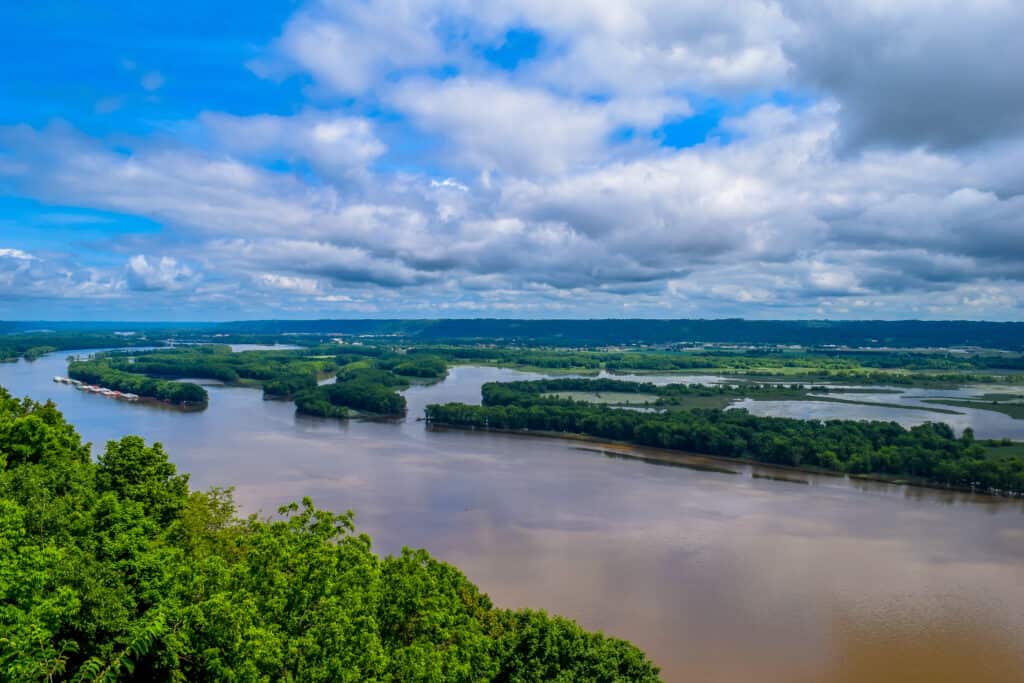
With its strategic location on the Mississippi River, St. Genevieve became an important hub for trade and transportation.
©EyeTravel/Shutterstock.com
Welcome to St. Genevieve, our next historic town along the Mississippi! Established in 1735 by French-Canadian settlers, this charming town has witnessed centuries of change, growth, and westward expansion.
Founding by French-Canadian Settlers
Envision a group of intrepid French-Canadians determined to make their mark in the New World. As they established St. Genevieve, their dreams of prosperity and community took root. With its rich French heritage, St. Genevieve offers a delightful taste of European culture in the heart of America.
Role in Westward Expansion
As the nation’s gaze turned westward, St. Genevieve found itself at the heart of the action. With its location on the Mississippi River, the town became an important hub for trade and transportation. It fueled the dreams of pioneers and entrepreneurs who ventured into the untamed frontier.
6. St. Louis, Missouri (Founded in 1764)

An aerial view of St. Louis’s downtown skyline at twilight.
©f11photo/Shutterstock.com
Step right into St. Louis, a city born in 1764. Pierre Laclède Liguest and Auguste Chouteau, French traders, set its foundations, placing it under the flag of France. They named the city after Louis IX of France. The 13th-century monarch was canonized by Pope Boniface VIII in 1297. Spain took control of the territory of French Louisiana in 1762 under The Treaty of Fontainebleau, but the Spanish government didn’t physically take control until 1770. Interestingly, the locals continued to live by French laws.
The Growth and Expansion of the River City
In the 19th century, St. Louis, situated at the meeting point of the Mississippi and Missouri rivers, emerged as a focal point for westward expansion. St. Louis became a critical port town along the Mississippi River. It was a bustling hub for fur traders, river traffic, and pioneers heading west. The city saw rapid industrial growth post-Civil War. Breweries, factories, and the iron industry, in particular, became prominent.
St. Louis Today: The Melding of History and Modernity
Fast forward to the present day, and St. Louis is a vibrant city teeming with historical landmarks and modern attractions. The iconic Gateway Arch stands tall on the city skyline, symbolizing St. Louis’s role as the “Gateway to the West.” Visitors can ride to the top of this 630-foot architectural marvel. Soulard, the oldest neighborhood in the city, offers a glimpse into 19th-century life. Red brick townhouses, the lively Soulard Market, and Mardi Gras celebrations give it a unique charm.
Don’t miss “The Hill,” famous for its Italian-American heritage and culinary delights. This is where Yogi Berra and Joe Garagiola grew up to become baseball legends.
7. Dubuque, Iowa (1788)

Established in 1788 along the mighty Mississippi River, Dubuque is brimming with history.
©iStock.com/Wirestock
Welcome to the fascinating town of Dubuque, Iowa! Established in 1788 along the mighty Mississippi River, Dubuque is brimming with history. It features tales of lead mining, riverboat commerce, and even a connection to the famed movie Field of Dreams.
A Rich Lead Mining Heritage
In the 1700s, determined miners arrived in Dubuque, lured by the promise of abundant lead deposits. As they extracted this valuable resource, their prosperity laid the foundation for a thriving town. This region is forever intertwined with its mineral wealth.
Riverboat Commerce and Growth
Did you know Dubuque was once a bustling riverboat hub? As boats navigated the waters of the Mississippi, the town flourished as a center for trade and transportation. It attracted entrepreneurs and
8. New Madrid, Missouri (Founded in 1789)
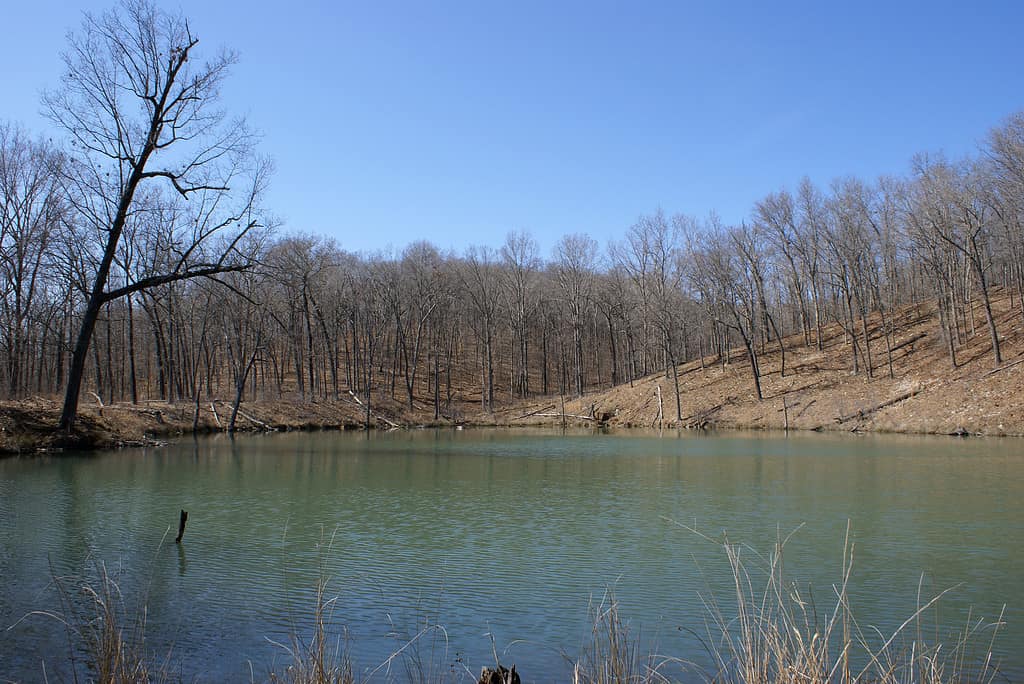
The Deepest pond in Missouri, created during the great earthquakes of 1811-1812.
©iStock.com/Darlene Spell
In 1789, a Spanish governor, Bernardo de Gálvez, founded New Madrid. The city, located on the Mississippi River, was originally a part of Spanish Louisiana.
France regained control of Louisiana from Spain in 1800 when Spain returned the territory with the Third Treaty of San Ildefonso. In 1803, the U.S. took control of New Madrid through the Louisiana Purchase, acquiring the territory.
The New Madrid Earthquakes
New Madrid is famous for the earthquakes that struck the region in the early 19th century. Between 1811 and 1812, the New Madrid Seismic Zone produced a series of powerful earthquakes. These quakes were some of the strongest in American history, altering the landscape drastically.
The quakes caused significant damage. The Mississippi River even flowed backward for a short period. Today, the New Madrid Fault remains an area of seismic interest.
New Madrid Today: A Town Steeped in History
New Madrid now offers a glimpse into the past, with its historic sites and museums. The New Madrid Historical Museum recounts the city’s history, including the notable earthquakes. The Hart-Stepp House, a restored 19th-century home, offers a glimpse into the past.
Kennon Observatory, an astronomical observatory, is another point of interest in New Madrid. It provides opportunities for star-gazing and learning about astronomy.
9. Warsaw, Illinois (1814)
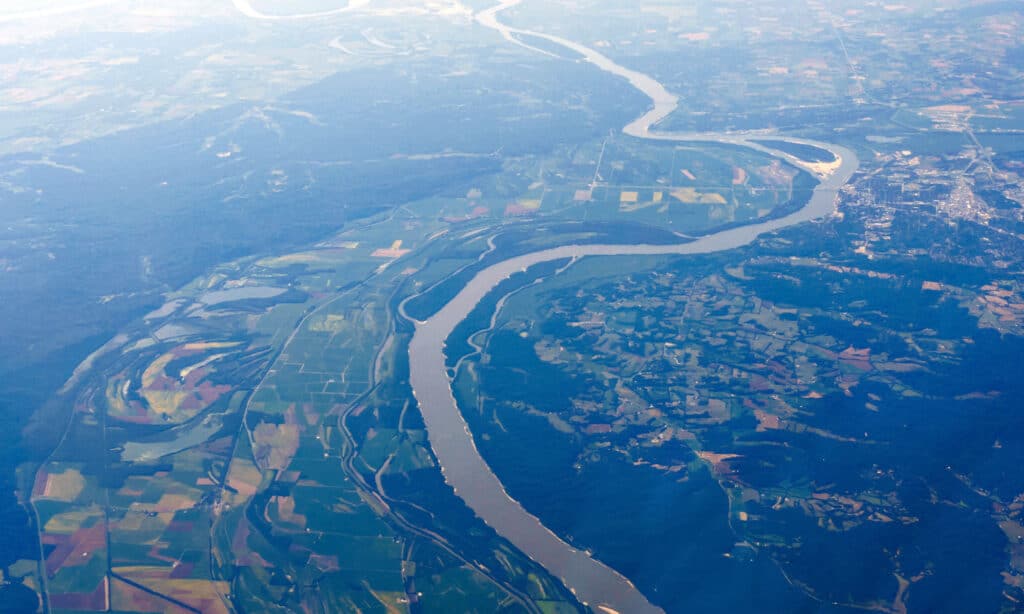
Warsaw’s strategic location on the Mississippi River soon transformed it into a vital transportation hub.
©RaksyBH/Shutterstock.com
Get ready to be charmed by Warsaw, Illinois! Founded in 1814, this picturesque town boasts a fascinating history deeply rooted in the fur trade and early transportation.
Early Settlement and Role in the Fur Trade
Adventurous settlers arrived in Warsaw, drawn by the promise of a thriving fur trade. They established a vibrant community that would shape the region for generations to come. Making it one of the oldest towns along the Mississippi River.
Development as a Transportation Hub
Warsaw’s strategic location on the Mississippi River soon transformed it into a vital transportation hub. From steamboats to railways, the town connected people, goods, and ideas across the nation, fueling progress and innovation.
10. Louisiana, Missouri (1816)

Founded in 1816, this charming town is steeped in history, with tales of pioneers and riverboats.
©Everett Collection/Shutterstock.com
Welcome to Louisiana, Missouri! Founded in 1816, this charming town is steeped in history, with tales of pioneers, riverboats, and the booming lumber industry.
Founding and Early Settlement
Early pioneers were drawn to the town of Louisiana by its fertile land and promising future. They settled in the area, giving birth to a thriving community.
Booming Lumber Industry
Louisiana was once a bustling hub of the lumber industry. With towering forests and the mighty Mississippi at its doorstep, the town became a center for processing and shipping lumber. A booming economy formed that attracted both entrepreneurs and workers.
11. Hannibal, Missouri (1819)

As Mark Twain’s childhood home, Hannibal serves as the backdrop for his beloved characters, Tom Sawyer and Huckleberry Finn.
©K. Bradley Washburn/Shutterstock.com
Ahoy, literary enthusiasts! Welcome to Hannibal, Missouri, the town that inspired Mark Twain’s most famous characters. Founded in 1819, this captivating riverside community is brimming with history, art, and adventure!
Mark Twain’s Childhood Home
A young Samuel Clemens, better known as Mark Twain, roamed the streets of Hannibal. He collected stories and adventures that would one day become literary masterpieces. As the author’s childhood home, Hannibal serves as the backdrop for his beloved characters, Tom Sawyer and Huckleberry Finn.
The Thriving Steamboat Era
Hannibal was once a busy steamboat hub. As boats chugged up and down the Mississippi, the town thrived with commerce and travelers. This action inspired Twain’s vivid descriptions of river life.
12. Memphis, Tennessee (Founded in 1819)
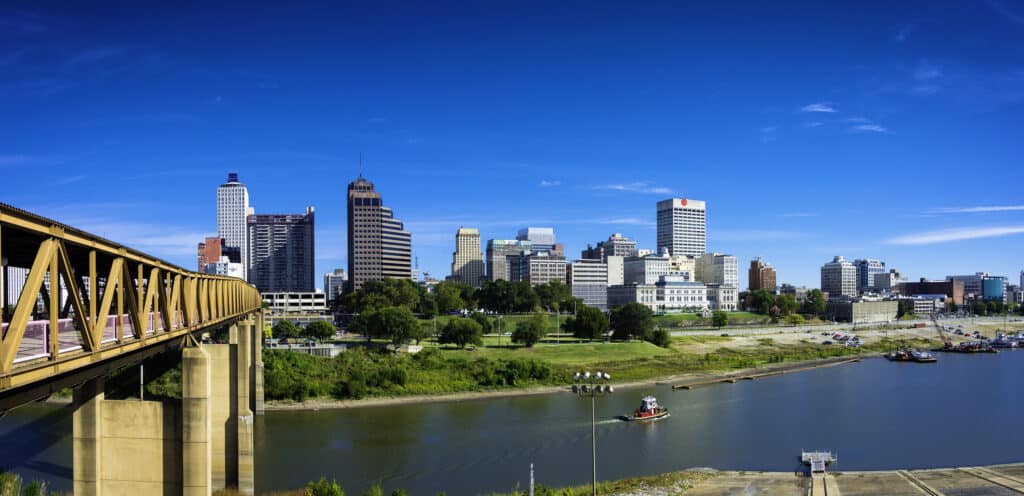
Memphis got its name from the ancient capital of Egypt.
©iStock.com/dosecreative
James Winchester, John Overton, and the would-be President Andrew Jackson laid the foundations of Memphis in 1819. They chose the spot because of its location on the fourth Chickasaw Bluff along the Mississippi River. Memphis got its name from the ancient capital of Egypt. The founders believed the city’s future mirrored the prosperity of its ancient namesake. Memphis quickly developed as a hub for the cotton and lumber industries. This old town’s advantageous location along the Mississippi River made it a busy riverport.
Memphis and the Civil War
Memphis played a significant role during the Civil War, marked by the Battle of Memphis in 1862. The Battle of Memphis, a naval battle, resulted in the Union gaining control. Memphis then served as a supply hub for the Union. After the war, Memphis continued to expand as a trade and transportation center. It became a major hub for train and river transportation.
Memphis Today: Birthplace of Blues
Memphis, often hailed as the birthplace of blues, has a rich cultural legacy. In the early 20th century, Beale Street became a hotspot for blues musicians. The likes of B.B. King and Louis Armstrong graced the city with their talents. Sun Studio, where Elvis Presley and Johnny Cash started their careers, still stands today. Stax Records, a soul music label, also emerged from Memphis.
Summary of 12 Oldest Towns Along the Mississippi River
| Number | Town | Date Founded |
|---|---|---|
| 1 | Cahokia, Illinois | 1699 |
| 2 | Prairie du Chien, Wisconsin | 1673 |
| 3 | Kaskaskia, Illinois | 1703 |
| 4 | New Orleans, Louisiana | 1718 |
| 5 | St. Genevieve, Missouri | 1735 |
| 6 | St. Louis, Missouri | 1764 |
| 7 | Dubuque, Iowa | 1788 |
| 8 | New Madrid, Missouri | 1789 |
| 9 | Warsaw, Illinois | 1814 |
| 10 | Louisiana, Missouri | 1816 |
| 11 | Hannibal, Missouri | 1819 |
| 12 | Memphis, Tennessee | 1819 |
Wrapping Up
And there you have it, fellow explorers! We’ve journeyed through the 12 oldest towns along the Mississippi River, each one brimming with history. All things considered, their stories have shaped the fabric of our great nation. Let’s not forget the lessons they teach us and especially the importance of preserving their legacies for future generations.
The next time you find yourself along the Mississippi, take a moment to immerse yourself in the rich heritage. Because, as the river’s currents continue to flow, it’s the stories of these timeless towns that bind us together.
The photo featured at the top of this post is © iStock.com/EJ_Rodriquez
Thank you for reading! Have some feedback for us? Contact the AZ Animals editorial team.







